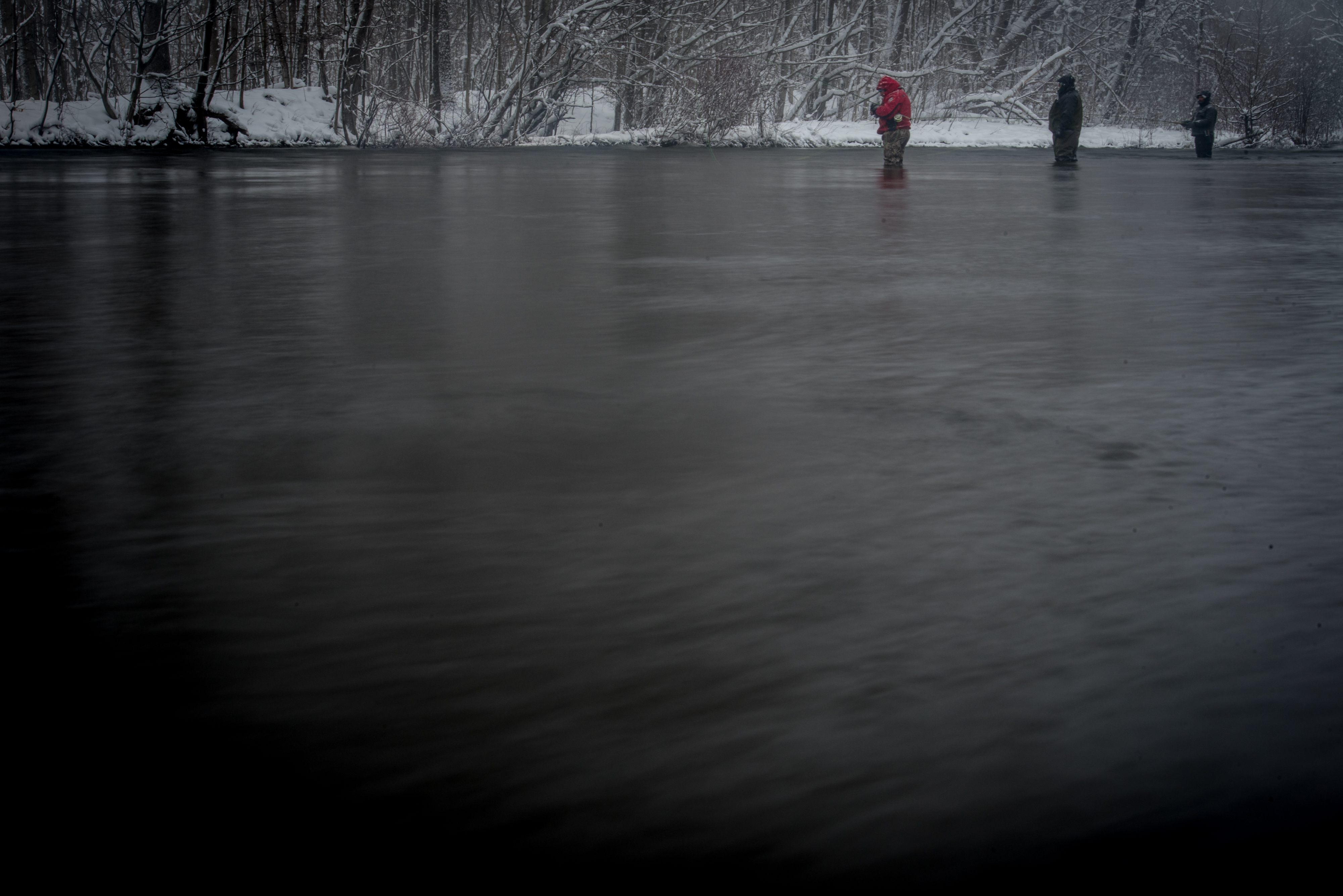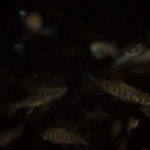After the rise of the Appalachian Plateau approximately 220 million years ago, the Salmon River and its tributaries were formed. The area drains approximately 280 square miles of forested, agricultural and rural residential lands on the western slopes of the Tug Hill Plateau and discharges into eastern Lake Ontario.
The greater Tug Hill, in which the Salmon River corridor is located, is a region where exceptionally good water quality exists due to an overall lack of impervious surface and high levels of forest cover. The region contains over 4000 miles of rivers and streams, 117,000 acres of wetlands and one of the largest intact forest blocks in the state. The abundance of water resources within the Tug Hill region is attributed, in part, to the 300-400 inches of precipitation that fall annually across the region. Lake effect precipitation delivers more than half of the annual precipitation and results in high seasonal variation of stream flow. Consequently, an abundance of water is available during most of the year to sustain the extensive wetland systems, high velocity streams and eroded gulfs of the region.
These natural resources lay the foundation for the outstanding water quality of the Salmon River; however, there are many agencies, parties and individuals hard at work to maintain the fragile balance that is the Salmon River. From the U.S. Department of Conservation and U.S. Forest Service, to local businesses and landowners, each have a fundamental role in preserving one of our nation’s most well preserved rivers while supporting their local economy and one of the heaviest sport fishing areas in the country.
According to the Salmon River angle survey, in Sept. through Nov. alone the river supported 96,456 angle trips totaling 655,706 angler hours. In order to balance this amount of fishing pressure, the New York DEC manages one of the most extensive fish stocking programs in the country at the Salmon River fish hatchery in Altmar, New York. Their efforts, help make the Salmon River able to support not only a world class fishery, but also a hatchery that is necessary for supplying all of the trout and salmon that are stocked into tributaries of Lake Erie ,the portion that borders New York, and all of Lake Ontario shoreline in New York State.

Steelhead trout are emptied into a lift before their eggs and sperm are harvested for fish stocking at the New York Salmon River fish hatchery in Altmar New York.
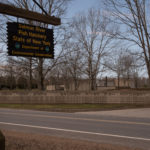
The New York Salmon River fish hatchery in Altmar New York.
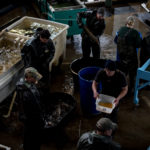
New York Salmon River fish hatchery workers sort and harvest Steelhead trout eggs and sperm for stocking at the New York Salmon River fish hatchery in Altmar New York.
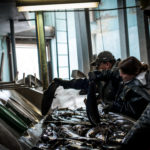
Nikki Saavedra, a fish culturist trainee, and Tom Kielbasinski, hatchery manager and fish culturist 4, sort Steelhead trout befor their eggs and sperm are harvested for fish stocking at the New York Salmon River Fish Hatchery in Altmar, New York.
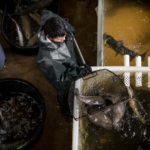
Kyle Nemecek, a fish culturist trainee, from Canandaigua, New York, retrieves male Steelhead trout from a sorting tank before their sperm is harvested for fish stocking at the Salmon River fish hatchery in Altmar, New York.
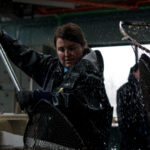
Nikki Saavedra, a fish culturist trainee, retrieves female Steelhead trout from a sorting tank before their eggs are harvested for fish stocking at the Salmon River fish hatchery in Altmar, New York.
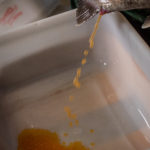
Peter Kinney, fish culturist one, from Binghamton, New York, squeezes a female Steelhead trout to harvest her eggs for fish stocking at the Salmon River fish hatchery in Altmar, New York.
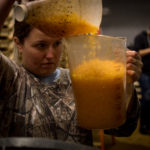
Nikki Saavedra, a fish culturist trainee, and Joe Hentges, a fish culturist 1, from North Syracuse, New York, prepare fertilized Steelhead trout eggs for storage after they are harvested for fish stocking at the Salmon River fish hatchery in Altmar, New York.
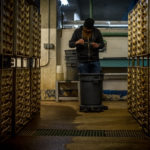
Joe Hentges, a fish culturist 1, from North Syracuse, New York, counts a sleeve of fertilized Steelhead trout eggs in order to calculate the amount of eggs per pint in the start tank room of the Salmon River fish hatchery in Altmar, New York.
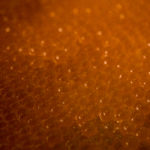
Steelhead trout eggs.
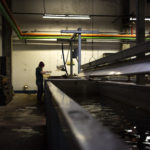
Nikki Saavedra, a fish culturist trainee, retrieves juvenile chinook salmon during a weekly fish count and growth monitor at the Salmon River fish hatchery in Altmar, New York.

Nikki Saavedra, a fish culturist trainee, prepares to weigh juvenile chinook salmon during a weekly fish count and growth monitor at the Salmon River fish hatchery in Altmar, New York.
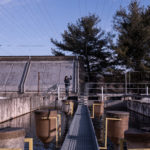
Kyle Nemecek, a fish culturist trainee, from Canandaigua, New York, brushes drainage intakes of a growth and imprinting tank as part of his daily chores at the Salmon River Fish Hatchery in Altmar, New York.

Kyle Nemecek, a fish culturist trainee, from Canandaigua, New York, removes protective lines from a growth and imprinting tank at the Salmon River fish hatchery in Altmar, New York. The lines protect the 32,500 juvenile steelhead trout that live in each tank.

Nikki Saavedra, a fish culturist trainee, and Joe Hentges, a fish culturist 1, from North Syracuse, New York, install a fish crouding screen in a growth and imprinting tank at the Salmon River fish hatchery in Altmar, New York. The screens are used to corner fish so they can be netted for transfer to a transport truck for release into the Salmon River.
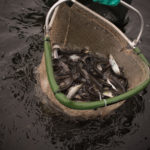
Joe Hentges, a fish culturist 1, from North Syracuse, New York, retrieves juvenile Steelhead trout from a growth and imprinting tank at the Salmon River fish hatchery in Altmar, New York. The fish are being netted to transfer to a transport truck for release into the Salmon River.
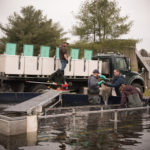
New York Salmon River fish hatchery workers retrieve juvenile steelhead trout from a growth and imprinting tank at the Salmon River fish hatchery in Altmar, New York. The fish are being netted to transfer to a transport truck for release into the Salmon River.
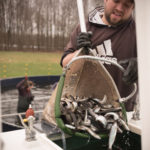
Peter Kinney, fish culturist one, from Binghamton, New York, transfers juvenile Steelhead trout into a transport tank at the Salmon River fish hatchery in Altmar, New York.
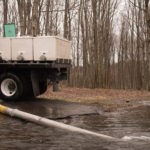
Peter Kinney, fish culturist one, from Binghamton, New York, releases juvenile Steelhead trout into the Salmon River behind the Salmon River fish hatchery in Altmar, New York.

The last of approximately 32,500 juvenile Steelhead trout are drained from a transport tank for release into the Salmon River behind the Salmon River fish hatchery in Altmar, New York.
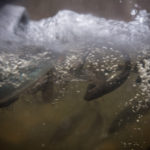
Juvenile Steelhead trout are released into the Salmon River behind the Salmon River fish hatchery in Altmar, New York.
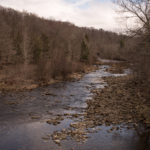
Salmon River. Altmar, New York.
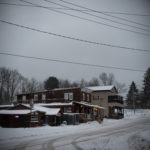
Salmon River Outfitters from corner of Bridge St. and Pulaski St. Altmar, New York.
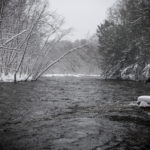
Ray Cummings, a pharmaceutical salesman from Montgomery, New York fishes for steelhead trout in the lower fly zone of the Salmon River in Altmar, New York.
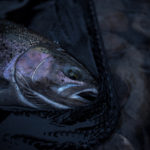
Ray Cummings, a pharmaceutical salesman from Montgomery, New York nets a steelhead trout in the lower fly zone of the Salmon River in Altmar, New York.

Fishermen in the lower fly zone of the Salmon River in Altmar, New York.
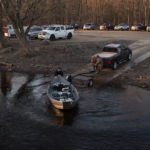
Richard and Stephen Barrondeau, from Mexico Point, New York, launch their foat boat in the lower fly zone of the Salmon River in Altmar, New York.
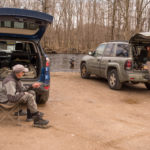
Craig Gunstone, left, from Lacona, New York and Dave Dafur, from Albany, New York prepare to fly fish the lower fly zone of the Salmon River in Altmar, New York.
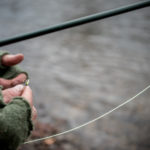
Andy Paul, from Manchester, New Hampshire, ties on a chartreuse nymph for fly fishing the lower fly zone of the Salmon River in Altmar, New York.
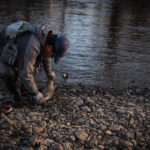
Ken Lee, from Liverpool, New York, removes a hook from a Steelhead trout in the lower fly zone of the Salmon River in Altmar, New York.

Melinda Barna, owner and operator of Melinda’s Fly and Tackle Shop, makes coffee for her customers, Ken Southwell (left), a retired police sergeant, from Pulaski, New York, Bill Koch (center), a retired airline attendant, from Cicero, New York, and Craig Gunstone, a retired auto mechanic, from Lacona, New York, as they trade fish stories after a morning of fishing the lower fly zone of the Salmon River in Altmar, New York.

Melinda Barna, from Altmar New York, logs inventory in her store, Melinda’s Fly and Tackle Shop.
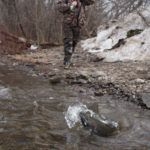
Matt Littlefield, a landscaper from Wells, Maine catches a steelhead trout in the lower fly zone of the Salmon River in Altmar, New York.
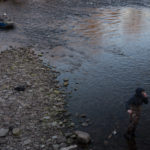
Fishermen below the lower fly zone of the Salmon River in Altmar, New York.
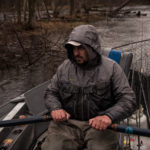
Ken Weber, fishing guide, from Mexico, New York, navigates his boat down the Salmon River.
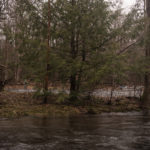
Fishermen. Salmon River, New York.
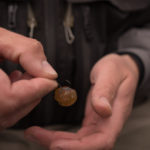
Ken Weber, fishing guide, from Mexico, New York, bates a hook with an egg sack during a guided fishing trip on the Salmon River, New York.
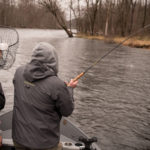
Ken Weber, left, fishing guide, from Mexico, New York, prepares his net, as Chris Dever, from Midland Park, New Jerseey, reels in a steelhead salmon on the Salmon River.
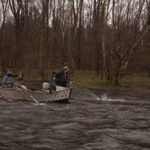
Carl Kerstetter, from East Strousburg, Pennsylvania, nets a Steelhead trout, for Laura Baslin, from Pennsville, New Jersey, during a guided fishing trip on the Salmon River, New York.

Lower trestle pool. Salmon River, New York.

Charlie Hebebrand, from Midland Park, New Jersey, cleans fish for customers at the Salmon River Outfitters in Altmar, New York.
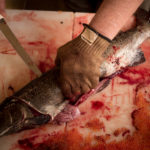
Charlie Hebebrand, from Midland Park, New Jersey, cleans a Steelhead trout for a customer at the Salmon River Outfitters in Altmar, New York.

Charlie Hebebrand, from Midland Park, New Jersey, watches television before bed at the Salmon River Outfitters in Altmar, New York.
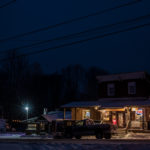
Salmon River Outfitters. Altmar, New York.
